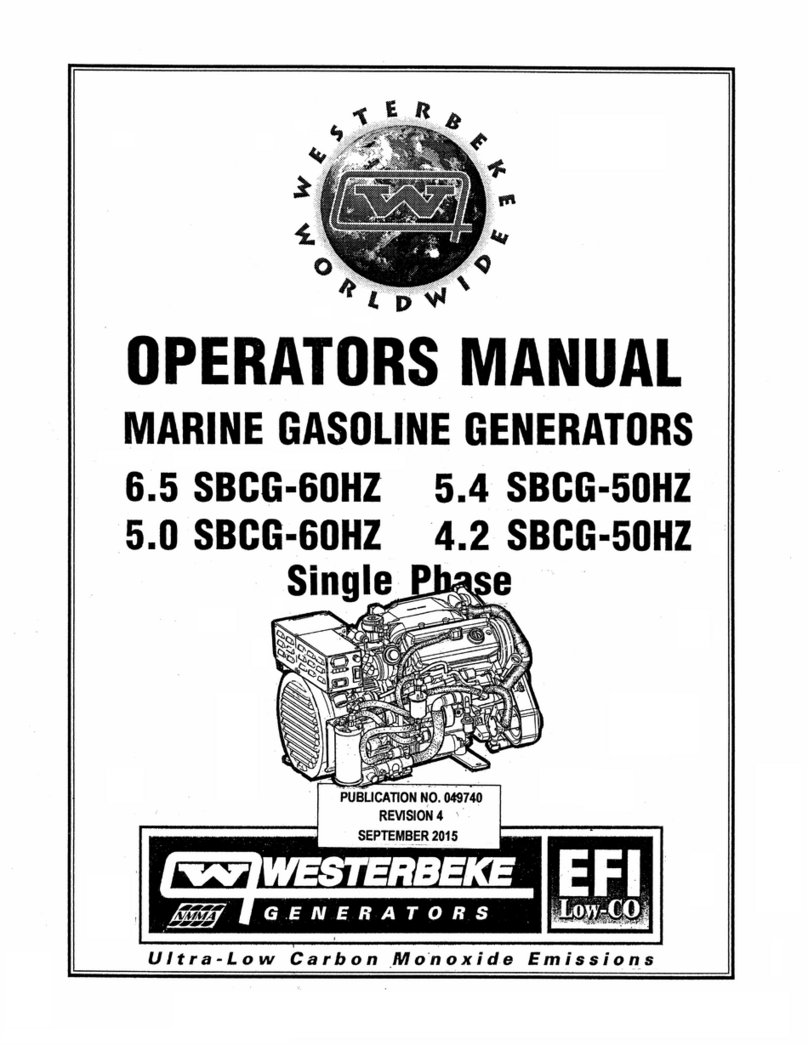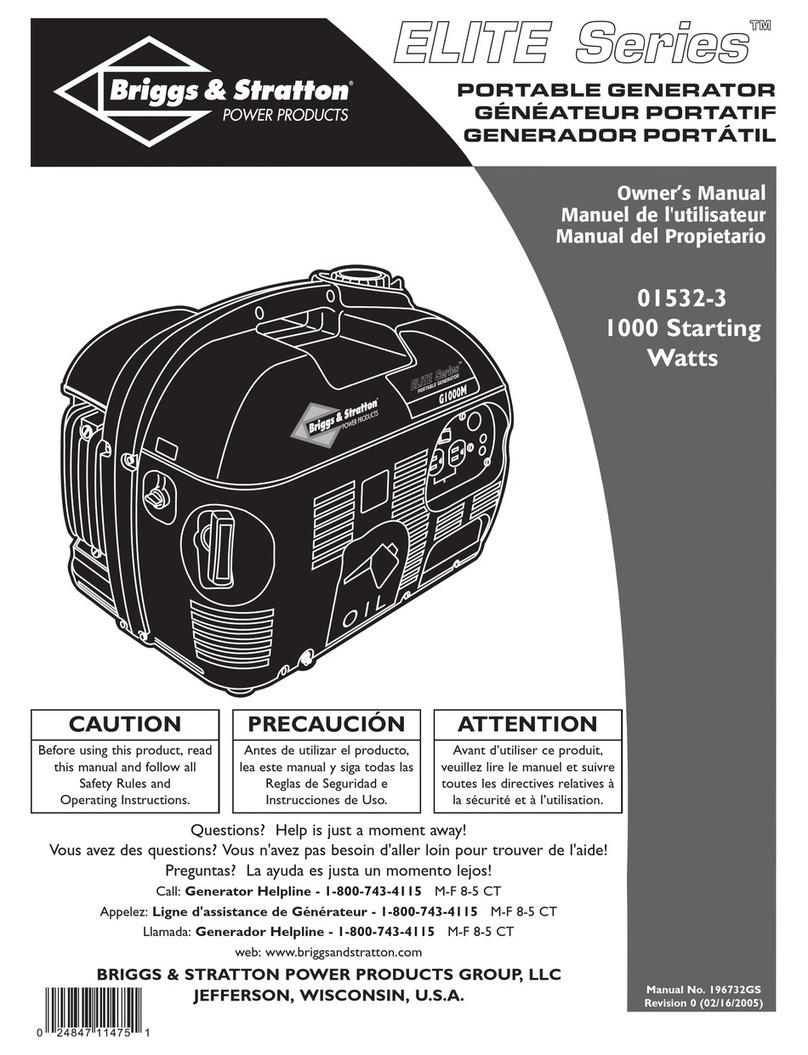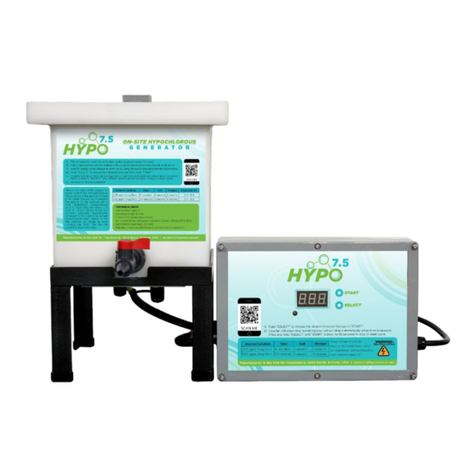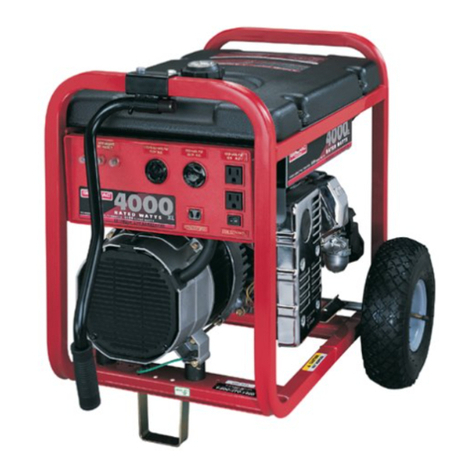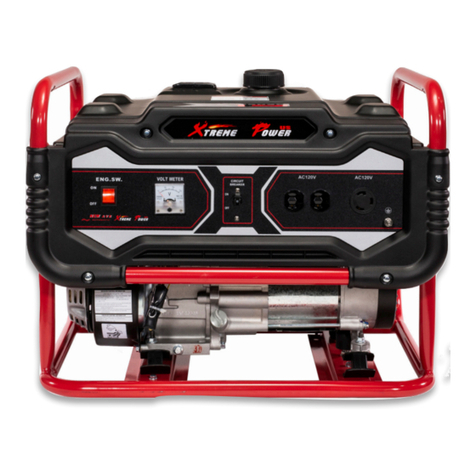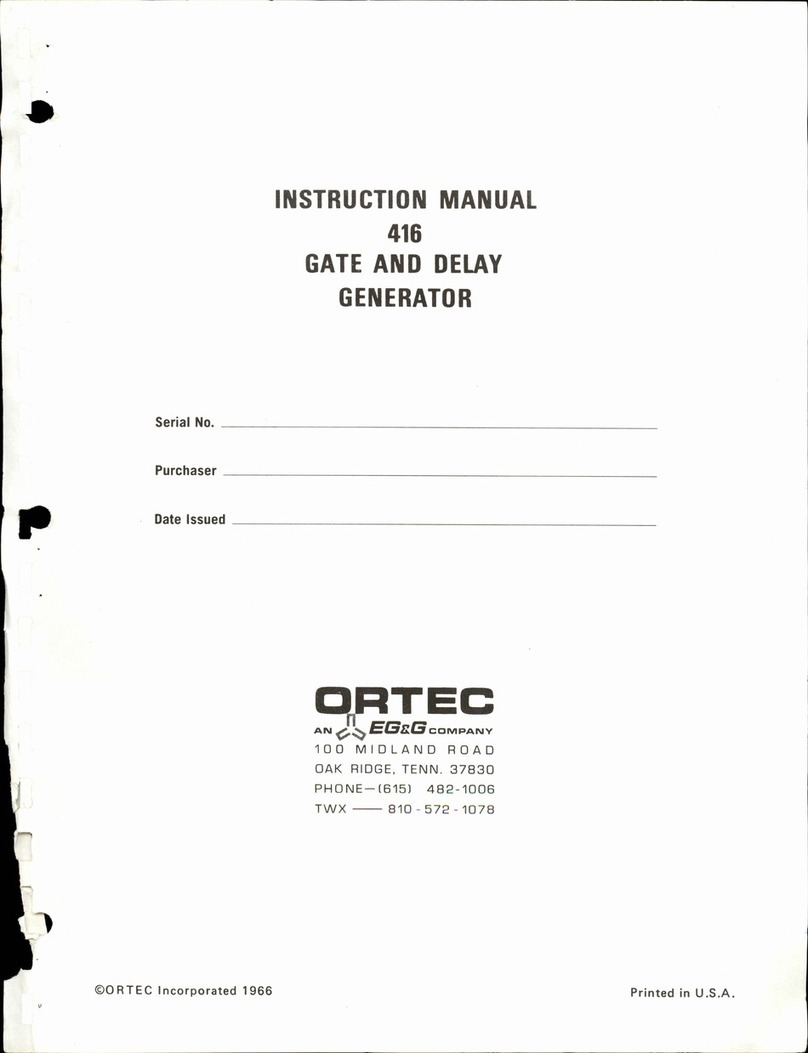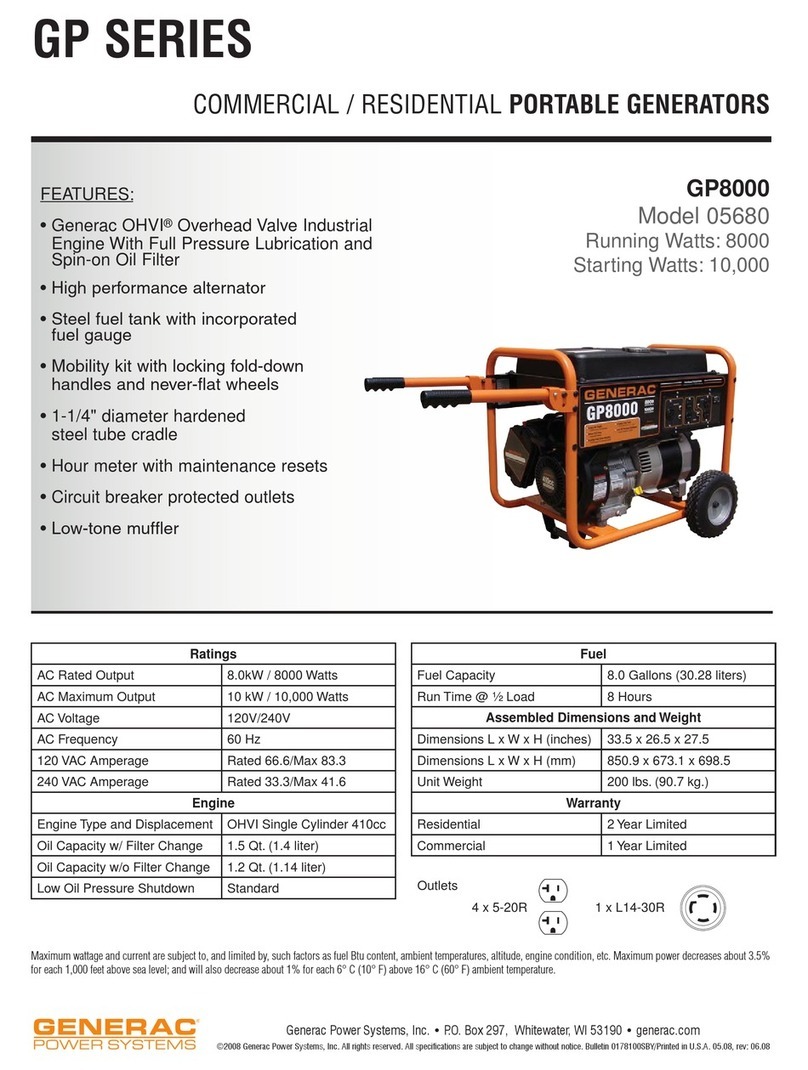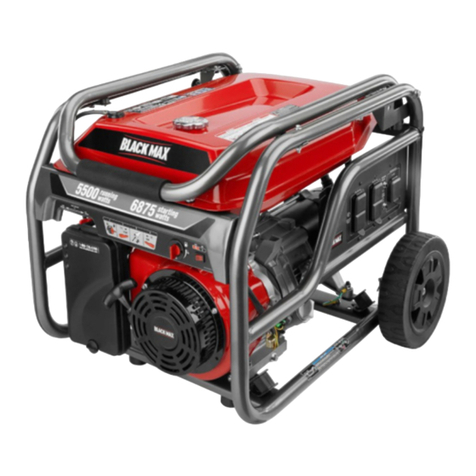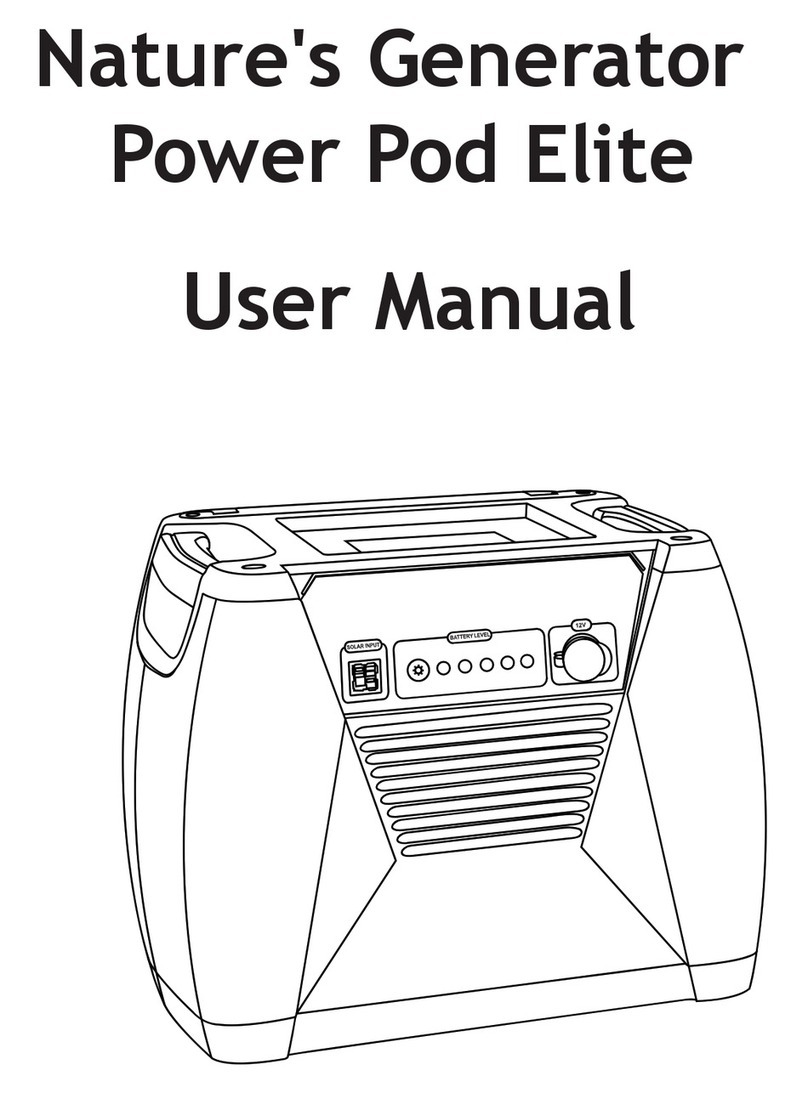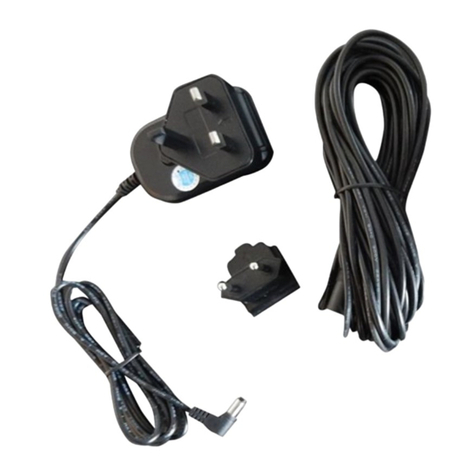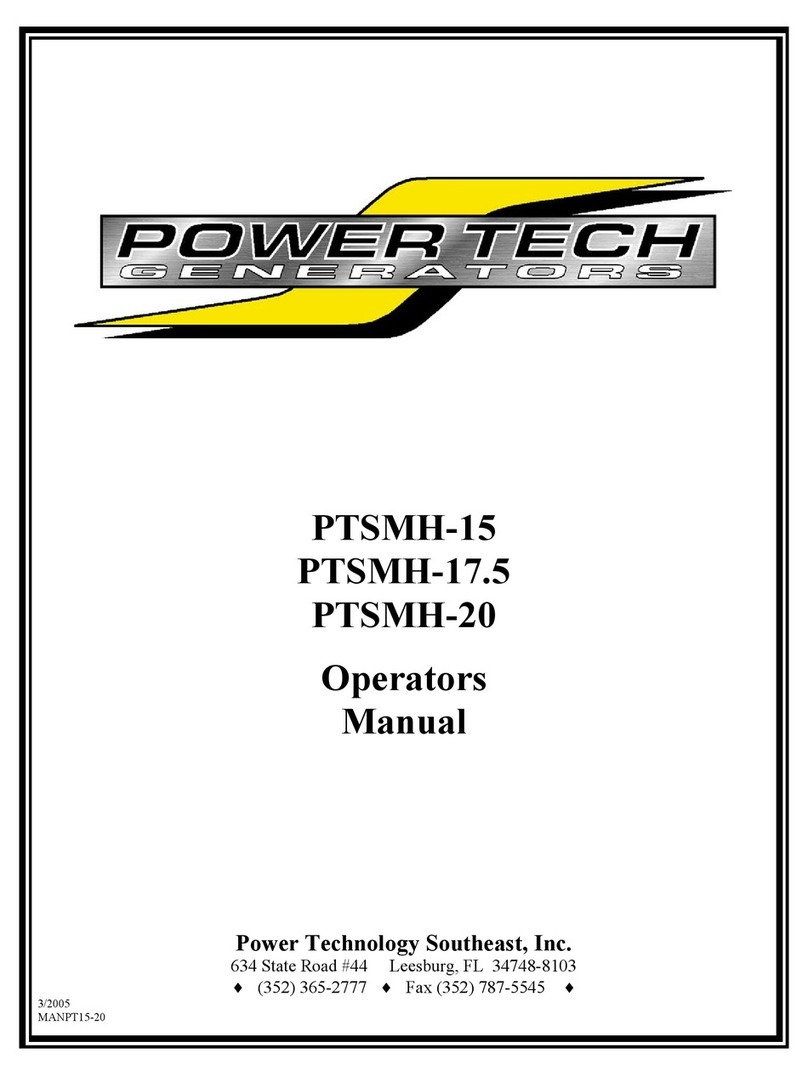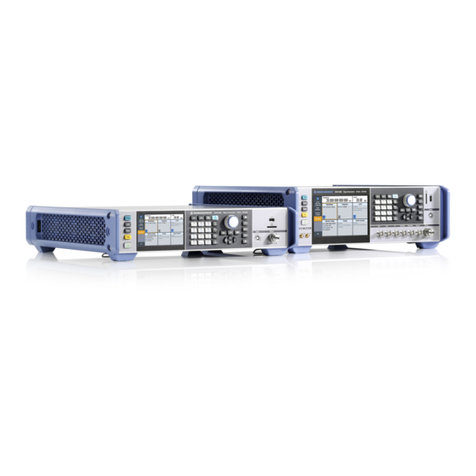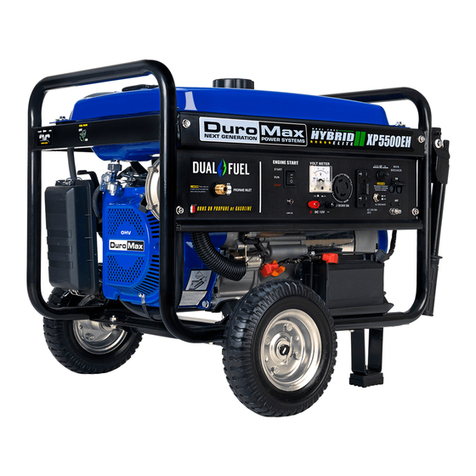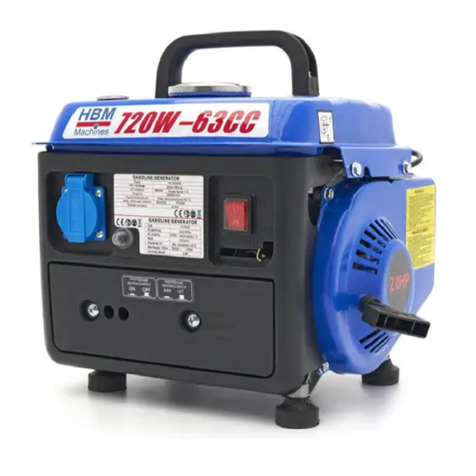
19
FRANÇAIS
partiellement fermé, l’air peut contenir une quantité dangereuse de
monoxyde de carbone. Ainsi, utilisez toujours la machine à l’extérieur
et à une distance suffisante des bâtiments.
Le monoxyde de carbone peut causer la mort en quelques minutes.
Utilisez toujours des détecteurs de monoxyde de carbone à pile. Si vous
vous sentez étourdi ou faible lorsque vous utilisez le groupe électrogène,
éteignez la machine, puis allez immédiatement dans un endroit pour y
respirer de l’air frais. Consultez un médecin pour un empoisonnement
possible au monoxyde de carbone.
• Utilisez toujours la machine à l’extérieur et à une distance suffisante des lieux
de vie.
• N’utilisez pas la machine à l’intérieur, au sous-sol, dans un grenier, dans un
garage ou une cabane.
• Lorsque vous utilisez la machine à l’extérieur, assurez-vous de fermer toutes les
fenêtres, les portes et les aérations.
• Assurez-vous que la sortie d’air ne se trouve pas face au bâtiment.
AVANT LA PREMIÈRE UTILISATION
La tension de fonctionnement et la fréquence de tous les équipements
électroniques doivent être vérifiées avant de connecter cette machine.
Des dégâts peuvent se produire si l’équipement n’est pas conçu pour
fonctionner avec une variation de tension de +/- 10 % et une variation de
la machine de +/- 3 Hz.
FAIRE LE PLEIN DE CARBURANT (FIG. E)
Utilisez toujours du carburant conforme aux spécifications suivantes : essence
sans plomb, indice d’octane de 87 au minimum.
N’ajoutez jamais d’essence pendant que la machine est en marche. Après
utilisation, laissez la machine refroidir pendant au moins 15 minutes avant
de remettre du carburant.
Ne fumez pas près de la machine ou près de l’essence. N’ajoutez jamais
de l’essence à proximité d’étincelles, de flammes ou de flammes nues.
Vous pouvez vérifier la quantité d’essence dans le réservoir sur la jauge de niveau
d’essence (22) au-dessus de la machine. F = réservoir plein, E = le réservoir est
presque vide et a besoin d’être rempli.
1. Arrêtez la machine, puis attendez pendant 15 minutes qu’elle refroidisse.
2. Dévissez le robinet d’essence (2).
3. Remplissez lentement le réservoir avec du carburant. Ne dépassez pas la
capacité maximale (remplissez le réservoir de préférence à 80 % de sa
capacité). (3)
4. Placez le bouchon sur le réservoir d’essence, puis serrez-le.
5. Nettoyez toute éclaboussure de carburant si nécessaire.
STOCKAGE DU CARBURANT
• Le carburant doit être stocké dans un conteneur propre et sécurisé qui doit
toujours être fermé.
• Si la machine n’est pas utilisée pendant 2 mois, le carburant doit être vidé et
stocké dans un réservoir.
• Ne laissez pas de carburant dans cette machine pendant trop de temps. Cela
peut boucher le carburateur et causer un mauvais fonctionnement du moteur.
• Lorsque vous n’utilisez plus le carburant, vous devez vous en débarrasser de
manière responsable. Consultez les lois locales relatives à l’élimination de
l’essence.
VÉRIFIER LE NIVEAU D’HUILE (FIG. F)
Utilisez de l’huile moteur 4 temps. L’huile SAE 10W-30 convient pour une utilisation
générale à toutes les températures. Vous pouvez utiliser une huile avec une autre
viscosité lorsque la température moyenne ambiante se situe dans les limites
indiquées.
• Arrêtez la machine, puis attendez pendant qu’elle refroidit.
• Évacuez toute huile usagée (21).
• Retirez la jauge (22) du point de remplissage.
• Remplissez le carter avec la quantité d’huile indiquée.
• Réinstallez la jauge.
LA BATTERIE
La machine est livrée avec la borne négative (-) de la batterie lithium-ion
déconnectée, pour une meilleure sécurité. Pour démarrer le groupe électrogène
avec un démarrage électrique, la batterie doit être connectée.
La batterie émet un gaz hydrogène très explosif.
• Gardez la batterie éloignée d’étincelles, de flammes ou de flammes nues.
• Ne connectez pas et ne déconnectez pas la batterie pendant que le groupe
électrogène est en marche.
• Ne faites l’entretien ou n’utilisez la batterie que dans des zones bien ventilées.
La batterie contient de l’acide sulfurique. L’acide de la batterie
est toxique. Incliner la machine avec la batterie peut causer des
éclaboussures d’acide de batterie.
• Portez des vêtements de protection et des lunettes de protection lorsque vous
entretenez la batterie.
• Tenez hors de portée des enfants.
• En cas de contact de votre peau avec de l’acide de batterie, lavez-la
immédiatement avec de l’eau.
• En cas de contact de vos yeux avec de l’acide de batterie, rincez-les avec de
l’eau pendant au moins 15 minutes et appelez immédiatement votre médecin.
CONNECTER LA BATTERIE (FIG. I)
1. Retirez le couvercle du boîtier de la batterie.
2. Connectez le câble négatif (-).
3. Replacez, puis serrez le couvercle (23).
CONNECTER LA BATTERIE (FIG. J)
1. Desserrez les sangles en caoutchouc, puis retirez l’ancienne batterie.
2. Retirez le couvercle (23) de la borne négative (-) de la batterie, puis
débranchez le câble noir (24) de la borne négative (-) de la batterie en premier.
Ensuite, déconnectez le câble (25) de la borne positive (+).
3. Retirez l’ancienne batterie, puis installez la nouvelle.
4. Tout d’abord, connectez le câble (25) du pôle positif (+), puis le câble noir (24)
du pôle négatif (-).
5. Placez la nouvelle batterie, puis utilisez les sangles en caoutchouc pour
sécuriser la batterie.
6. Replacez, puis serrez le couvercle (23).
METTRE LA MACHINE À LA TERRE
• Pour réduire le risque d’électrocution et optimiser la sécurité, le groupe
électrogène doit être correctement mis à la terre.
• Mettez la machine à la terre en serrant l’écrou de mise à la terre sur le panneau
de commande avec un câble de mise à la terre.
• Ce câble de mise à la terre doit être connecté à l’autre extrémité à un câble en
cuivre, en laiton ou en acier connecté à la terre. Le câble et le câble de mise à la
terre ne sont pas inclus.
Le non-respect des consignes de mise à la terre de la machine peut
augmenter le risque d’électrocution.
CONTRÔLE INTELLIGENT DU MOTEUR (ESC)
• Lorsque l’ESC est sur « ON », la commande contrôle la vitesse du moteur en
fonction de la charge des appareils connectés. Le résultat est une meilleure
consommation du carburant et une diminution du bruit.
• Lorsque le bouton ESC est sur « OFF », le moteur va tourner à une vitesse
nominale (4 500 tr/min), qu’une charge soit connectée ou non.
UTILISATION
N’utilisez pas la machine à proximité immédiate de personnes et/ou
d’animaux. Restez toujours au moins à 15 mètres de distance.
Lisez attentivement toutes les instructions avant d’utiliser votre machine.
Respectez les précautions de sécurité pour votre protection personnelle.
DÉMARRER LA MACHINE (FIG. A, B + H)
DÉMARRAGE MANUEL
1. Mettez la commande des gaz ESC (13) en position « I ».
2. Faites tourner le commutateur multiple (10) en position « ON ».
3. Tirez sur le cordon du démarreur 4 à 6 fois jusqu’à ce que le moteur démarre.
DÉMARRAGE ÉLECTRONIQUE
1. Mettez la commande des gaz ESC (13) en position « I ».
2. Faites tourner le commutateur multiple (10) en position « ON ».
3. Appuyez et maintenez le bouton Start/Stop (11) enfoncé pendant 1 à 3
secondes.
Si le moteur ne démarre pas : relâchez le bouton Start/Stop et appuyez
de nouveau dessus. Le fait de maintenir le bouton de Start/Stop trop
longtemps peut endommager le démarreur.




















